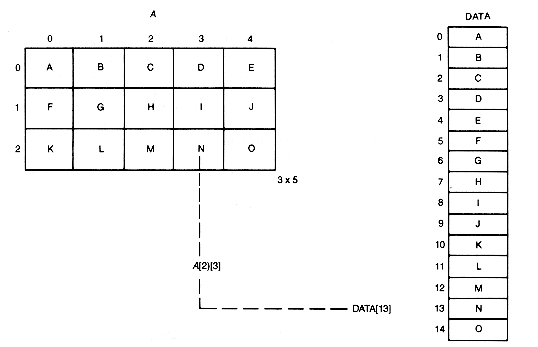Rowwise representation in arrays is similar to the first method discussed for storing records. In fact, it is logically the same as viewing each row as a record of length c. Thus the offset of the entry in position (i,j) of a is i * c + j in data. This is because rows 0, 1, . . . , i - 1 precede the ith row in data, and take up i ?/FONT> c entries. The jth position of the ith row is offset an additional j entries.
For the array a shown in Figure 2.11, with c = 5, the offset of a[2][3]is 2 * 5 + 3, or 13, and the third row of a starts at data[10]. a[2][3] is represented by data[13]. In C the offset and index are the same, since index values start at zero.
With this representation, function check of Example 2.3 would be written as
Obviously, this representation in data allows a to be traversed, as well as allowing its (i,j)th entry to be selected.
The columnwise representation of a two-dimensional array is similar, except that the columns rather than the rows of a are stored sequentially in data. The offset for the entry in position (i,j) with the columnwise representation is j*r + i.
#define TRUE 1
#define FALSE 0
check(data,n)
/* Returns true only if an nxn
two-dimensional array stored in
rowwise representation in array
data is symmetric
*/
int data[];
int n;
{int i,j,ck;
ck = TRUE;
for(i=1; i<n && ck ; i++)
for(j=0; j<i && ck ; j++)
if(data[(i*n+j)] != data[(j*n+i)])
ck =FALSE;
return(ck);
}

Figure 2.11 Representing a Two-Dimensional Array as a One-DimensionalArray